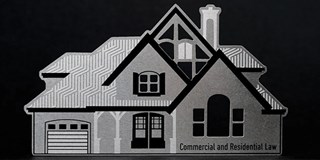Article by Daniel Sweet
___
Like Martyn’s company, other manufacturers who specialize in metal business cards work with stainless as their primary material. As Michael Davis, Vice President of MetalKards.com explains, it all comes back to the “wow-factor” of a stainless steel product. “There is no shortage of paper cards, and these often get discarded quickly. You put the contact’s phone number and email in your smartphone, so why would you save a generic business card? But with stainless steel, the card becomes a piece of art. You can feel the quality, and you understand that the person who gave it to you cares about their interactions with others. You want to save it, and even show it to others, because it is impressive. That’s the power of stainless steel.”
“We use 304 stainless steel because it’s very durable, cost effective, easy to obtain, and great to work with.”
Grade
For those familiar with stainless steel, it is perhaps unsurprising to read that 304 is the preferred grade for metal business card companies. Grade 304 is famous for its versatility and affordability—two features that make it ideal for metal business card companies like Mr. Martyn’s. “Our base material is all 304 stainless steel because of the quality, etching capabilities, and price. With 304, the supply and production chain has been steady and pricing has been stable. There have never been any shortages. 304 is the industry workhorse for a reason.”
Echoing this sentiment, Mr. Davis said, “we use 304 stainless steel because it’s very durable, cost effective, easy to obtain, and great to work with. Our cards are meant to be treasured, but also shouldn’t cost an arm and a leg. 304 allows us to source stainless at a cost that doesn’t get passed on to the customer.”
Process & finishes
There are a number of processes that allow stainless steel to be customized for business cards, including chemical etching, silk screening, and laser etching. In the end, the goal is to achieve a finished product that will make an impact on the client, and more importantly, on their business contacts. For Mr. Davis, the attention to detail in processing and finishing stainless steel business cards is comparable to products like smartphones: “Along with high-end companies like Apple, who offer a variety of iPhone colors, we’ve modeled our color card finishes to reflect the products you carry daily and to offer an extra level of customization for the end user. At the same time, color finishes have a practical application. Raw stainless steel is beautiful, but when you laser etch it, there just isn’t a ton of contrast for the lettering. A finish allows the card to be both beautiful and functional.”
“In the end, the goal is to achieve a finished product that will make an impact on the client.”
Mr. Martyn also speaks about the importance of quality processing. “We employ a double-pass etch, so instead of just etching 50% from both sides on the sheet, we will etch 10% on both sides, and then go back and do the 50% on both sides. You see, as acid cuts down into the steel, it also cuts sideways. If we are trying to etch something thin like lettering, etching that at 50% (only) will yield ‘bubble letters’ because the acid ate away the material beyond the original artwork. By leaving the acid on for a fraction of the time, we are able to etch only 10% and thus have very crisp, clean lines. This requires two unique artworks and re-running the sheets through a number of processes required for chemical etching, but in the end it allows us to etch lettering so that the characters and numbers do not lose their shape. I just love good design, and when you see a finished stainless steel card that looks great, I feel a real sense of accomplishment. Part of the good design comes in the processing—but of course, the other part comes in material selection. We’ve made the right decision in choosing stainless steel.”
For more information visit: www.mymetalbusinesscards.com
For more information visit: www.metalkards.com



